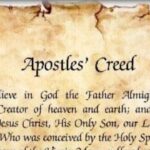A review of Jesus: Life or Legend. By Carsten Peter Thiede. Lion, 1990, 1997.
It has been the habit of skeptics in general and devotees of higher criticism in particular to undermine the authority of the Bible by arguing, among other things, that the ancient scriptures were often times written many years (or decades or centuries) after the events they describe; and that the manuscripts we possess are quite late, and give us little help in deciding what the original manuscripts indeed have said. This has especially been the case in New Testament scholarship. Liberal theologians have tended to argue for late dates for the gospels and the epistles, thereby rendering the Scriptures as we have them today as less reliable and less authentic.
Conservative scholars have sought to argue that this is not the case. The New Testament, for example, is thought to have been written down well within a century of the death of Christ. In fact, most conservative scholars argue that the earliest portions of the New Testament (the Epistle to the Galatians, eg.) were written in the mid to late 40s, and the latest portions (such as the book of Revelation) were written in the mid to late 90s. Thus the accuracy and reliability of these writings can be made much more sure, assuming these early dates are correct.
The question arises of course as to who is correct: the liberals or the conservatives. The main way of answering this question is to examine the evidence in the most unbiased fashion possible. The book before us is an example of objective detective work, an attempt to pin down some of the answers.
In particular, Thiede examines the evidence for the gospels. Are they reliable? When were they written? Are these biblical accounts meant to be taken as factual history or as myth? What about the gnostic gospels? These and other questions are explored in detail in this helpful and readable volume.
The reader should be informed however that the debate about the gospels is a very large one, with increasing volumes of literature being produced on the subject. The recent Jesus Seminar, known for voting on the authenticity of the sayings of Jesus by the casting of coloured beads, is but one element of the ferocious debate that is raging concerning the question of who Jesus was, what we can know of him, and how trustworthy are the gospel accounts. The value of this book is the manner in which the author sifts through a mountain of literature and digests it in a form that the layman can comprehend.
So then, what about the gospels? Are they reliable? Consider the authors. From recent historical/archeological discoveries we now know the following. Many scholars assume Mark made use of material from Peter for his gospel. More than just a mere fisherman, Peter would have had, for business purposes, basic reading and writing skills in several languages. Matthew, the tax collector, would also have to have been quite literate. Luke, the doctor, would likewise have been well-educated. And John appears to have had contact with the high priest’s palace, perhaps indicating a higher social/educational level.
The gospel writers, in other words, were not country bumpkins, but somewhat learned and literate men, making them well-equipped to write accurate and reliable accounts of the life of the man they spent three years with.
We also are now learning about various types of writing, including shorthand, that was prevalent in Jesus’ day. Some of the early disciples, may have used such techniques in taking notes about what Jesus said. Coupled with the developed use of memory common in those days, the likelihood of getting a quite reliable record of the words of Jesus seems increasingly probable. The quality of the source material, in other words, may be quite high.
But the question of when the gospels were written still arises. Estimates vary from throughout the first century AD and beyond. Thiede makes a number of proposals, offers a number of possible clues, and arrives at a date of the mid 40s for Mark’s gospel. With an early date for Mark, Thiede argues that Matthew may have followed soon after (even though he may have written extensive shorthand notes well before this time). Luke, and John then followed in the next several decades.
It must be admitted that dating the New Testament seems to involve much speculation. That is the case here as well. Thus the evidence Thiede offers needs to be weighed and assessed, but it needs to be taken seriously.
Not only are these manuscripts much closer to the original than any other non-Christian literature of antiquity, but we have many more copies (whole or fragments) than we have of the other. The manuscript evidence, in others is quite remarkable, and quite reassuring.
Thiede explores other questions – such as whether Jesus ever made it to Rome – and again offers historical reconstructions. How accurate these are remains to be seen. But as Thiede himself admits, we still await further data, and possible new discoveries may shed much helpful light on these issues. But the evidence presented here does appear sound, and the argumentation is in many respects convincing.
This book performs the service of making accessible to laymen the complexities and difficulties involved in seeking to answer some important questions about history’s most important figure. The apologetic nature of this material is well worth the price of the book. And the wealth of information of a historical and archeological nature makes the book fascinating and enjoyable reading as well.
[915 words]



















